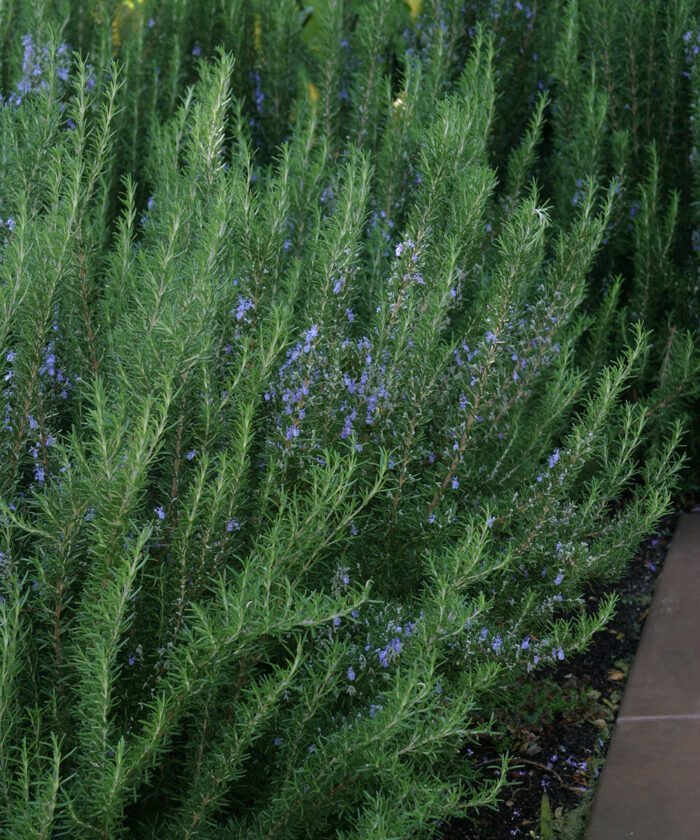
I read recently that ancient Greece–inspired and Mediterranean décor was the next big thing in interior design. Perhaps many of you will feel inspired to add a marble bust to your fireplace mantle. But what about Mediterranean plants? In the Southeast, plants that prefer a Mediterranean climate are not always at home. Humidity and wet winters—not just the cold—are normally the downfall of these plants. But there are some Mediterranean staples that we can grow very well in our region. They are not always extremely long-lived but can be enjoyed in the garden while they last.
One of my favorite long-lasting Mediterranean plants for the Southeast is rosemary (Salvia sosmarinus syn. Rosmarinus officinalis, Zones 8–11). This is a beautiful plant for the landscape and has been used for hundreds of years in the kitchen for its unique flavor profile. I consider rosemary a subshrub in our region. Most cultivars reach 2 to 4 feet tall over time. Few other plants can offer the combination of evergreen foliage, attractive blooms, and fragrance you find with rosemary.
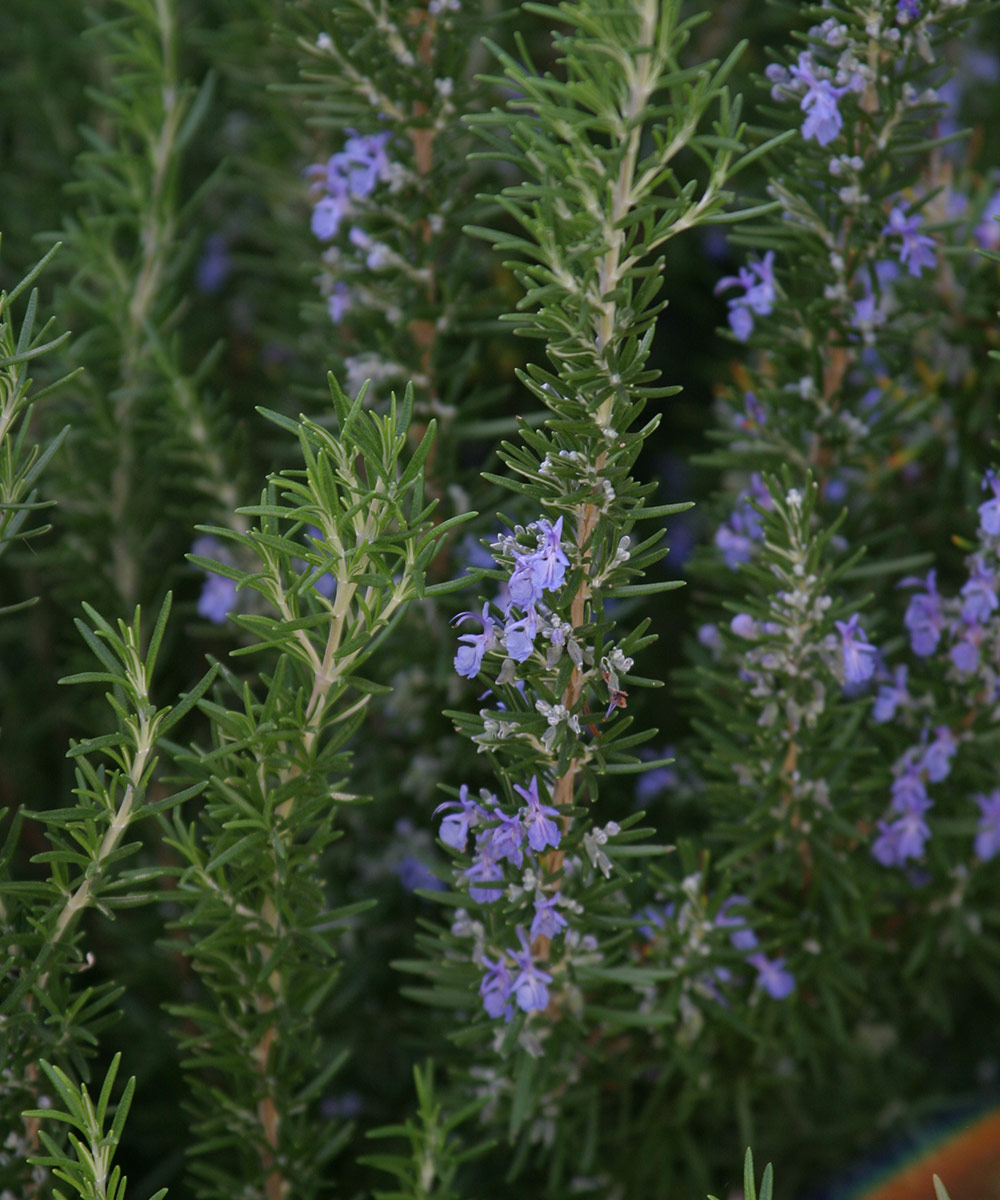
How to Grow Rosemary in the Southeast
Because rosemary is on the edge of hardiness for many of us, plant it in late spring in the Southeast. This gives the plant the entirety of the growing season to get established. For most, the month of May is ideal. Cool, wet soil and temperature fluctuations can be hard on unestablished plants. Good drainage and full sun are the key ingredients to growing rosemary. Plant rosemary slightly above grade, mounding soil up to the roots. This will help with drainage, especially during winter. If you have a sunny hillside, this is an ideal location.
If you want to grow rosemary for culinary use, know that the very light pruning required to grab a few sprigs won’t hurt the plant. If you want to be heavy-handed with pruning, timing becomes more important. If substantial pruning is desired, early June is a good window of time. Pruning in late summer or early fall can be disastrous and cause new growth susceptible to damage in winter. Additionally, pruning too early in spring before the soil warms is often a death sentence for this warm weather–loving plant. As plants age, woody stems start to develop. Plants will not respond favorably to being cut back into their woody stem sections and leaving no foliage. Cutting rosemary too far back into its woody growth can cause stems to die.
Cultivar Selection Is Key in the Southeast
You may have already taken note that rosemary is listed as hardy in Zones 8-11. This is accurate for most rosemary. Being in Zone 8 means that average lows rarely drop below 10°F. Many of us in the northern Southeast experience temperatures below 10°F yearly. This is where cultivar selection is very important. There are several rosemary cultivars known to survive in Zones 6 and 7 and to persist for many years. If the bloom is important, you may want to explore multiple cultivars. Different cultivars may bloom at wildly different times. There are early-season and late-season bloomers. If taste is important, different cultivars are also known to have slightly different flavors. This can be important if you like to cook with rosemary.
Rosemary is a wonderful plant to add to any full-sun garden. I particularly enjoy planting rosemary along garden paths. Brushing your hand against this aromatic herb enlivens your senses as you travel through the garden. If your primary goal is using rosemary for cooking, I suggest trying the taste of different cultivars before planting. The distinct camphor-pine herbiness of rosemary’s natural oil is stronger with individual cultivars. Rosemary is also reported to have a variety of health benefits. Below is a list of some of the top cultivar selections you can make in the Southeast.
Top Cultivars for the Southeast
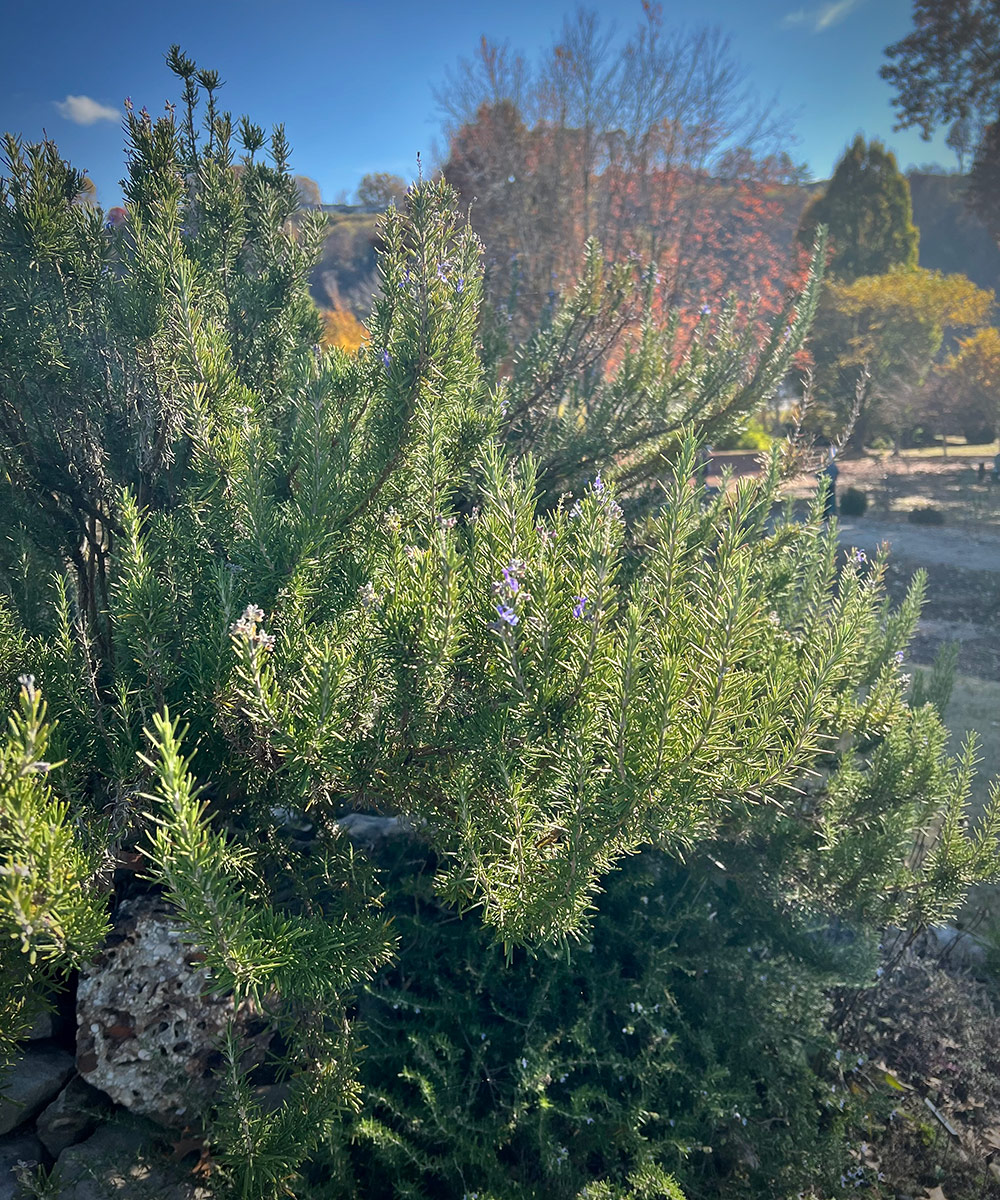
‘Arp’ rosemary
Salvia rosmarinus ‘Arp’ syn. Rosmarinus officinalis ‘Arp’, Zones 6–11
‘Arp’ grows 4 feet tall and wide. It has an open habit but can be kept denser with properly timed pruning. Featuring gray-green leaves with a heavy pine taste, it sports bright blue to purple flowers. This cultivar is hardy to –10°F. It was selected in 1972 from plants growing in Arp, Texas, by Madalene Hill.
‘Salem’ rosemary
Salvia rosmarinus ‘Salem’ syn. Rosmarinus officinalis ‘Salem’, Zones 7–11
‘Salem’ grows 2 feet tall and wide. It does not seem to be as hardy as ‘Arp’ or ‘Madeline Hill’ but is known to be more tolerant of wet soil. This is a plant that is popular in moist areas of the Pacific Northwest. Overall it’s a more formal-looking rosemary with a nice flavor. I have seen it growing comfortably in Zone 7.
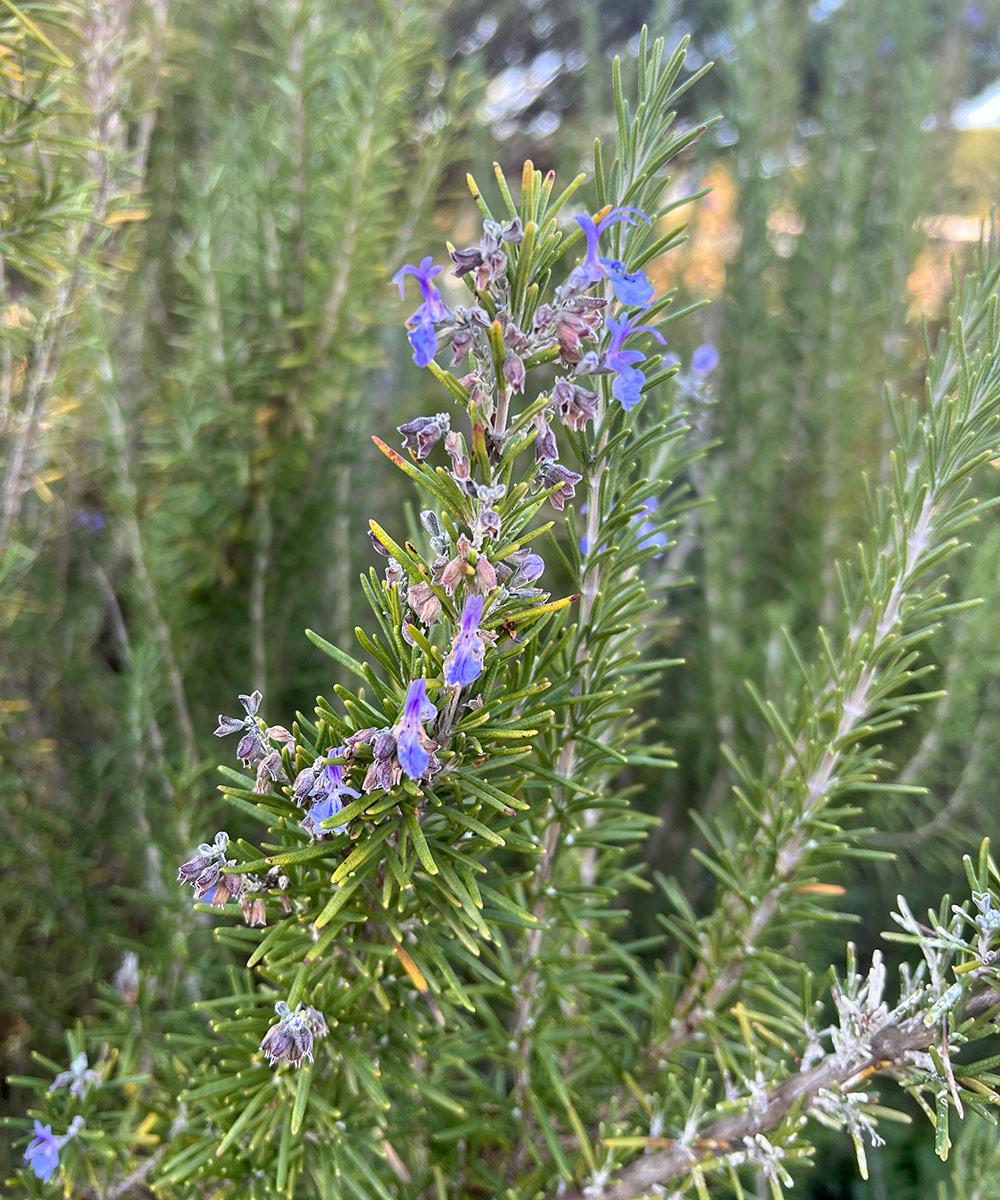
‘Madeline Hill’ rosemary
Salvia rosmarinus ‘Madeline Hill’ syn. Rosmarinus officinalis ‘Madeline Hill’, Zones 6–11
‘Madeline Hill’ rosemary, which is also known as ‘Hill Hardy’ or ‘Hill’s Hardy’, reaches 3 to 4 feet tall and wide. Hardy to at least 0°F, this plant was discovered as a sport (naturally occurring mutation) of ‘Arp’ rosemary. It’s a more compact, denser plant with greener foliage. It was named ‘Madeline Hill’ after Madalene Hill, who discovered ‘Arp’ (although it is spelled differently). After ‘Arp,’ this is perhaps the second most cold-hardy rosemary plant on the market.
‘Tuscan Blue’ rosemary
Salvia rosmarinus ‘Tuscan Blue’ syn. Rosmarinus officinalis ‘Tuscan Blue’, Zones 8–11
‘Tuscan Blue’ is an attractive rosemary with very aromatic leaves and dark blue flowers. It grows 6 to 7 feet tall and has an upright habit. This rosemary is probably the best one to grow strictly for aesthetics. ‘Tuscan Blue’ was introduced prior to 1948 from Tuscany, Italy. It’s not as hardy as other rosemary cultivars mentioned here, but it is a very fast grower.
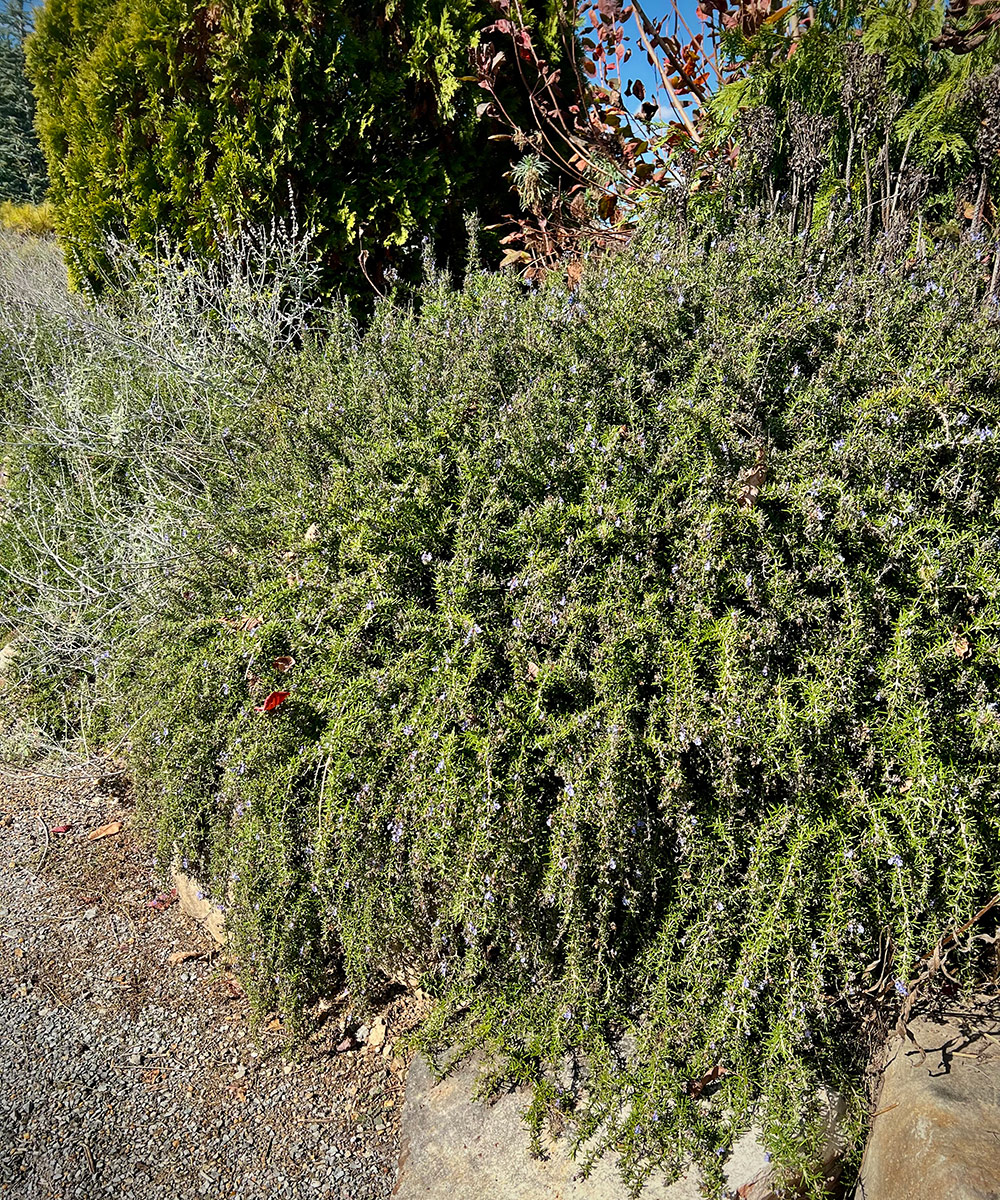
Prostrate rosemary
Salvia rosmarinus ‘Prostratus’ syn. Rosmarinus officinalis ‘Prostratus’, Zones 7–11
This low-growing, creeping form of rosemary stays under a foot tall. There are several weeping forms of rosemary sold under different names (perhaps many of which are the same plant); ‘Huntington Carpet’ is another often-sold prostrate form. Extremely attractive draping over walls and rock, prostrate rosemary will need some protection and good drainage to survive. The taste has less of a camphor flavor than that of other selections. This plant’s hardiness may be an issue for colder regions of the Southeast.
If you provide for their basic needs and choose a smart cultivar for your zone, you’ll find that rosemary may reward you in many ways. Apart from its culinary value, it makes an attractive subshrub in the landscape with its beautiful textured foliage and cute purple flowers.
For more Southeast regional reports, click here.
Andy Pulte is a faculty member in the plant sciences department at the University of Tennessee.
Photos, unless otherwise noted: Andy Pulte
Fine Gardening Recommended Products

A.M. Leonard Deluxe Soil Knife & Leather Sheath Combo
Fine Gardening receives a commission for items purchased through links on this site, including Amazon Associates and other affiliate advertising programs.





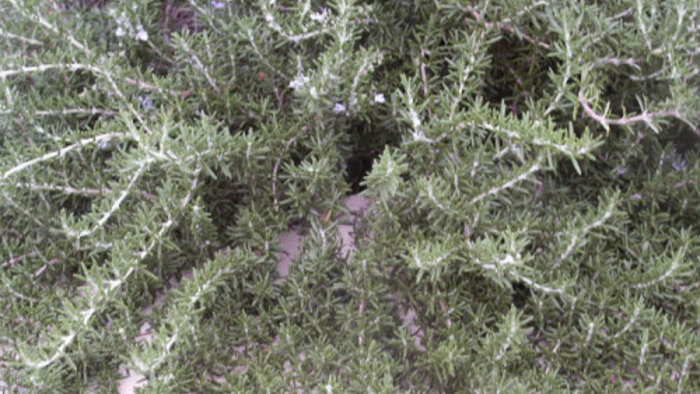













Comments
Log in or create an account to post a comment.
Sign up Log in